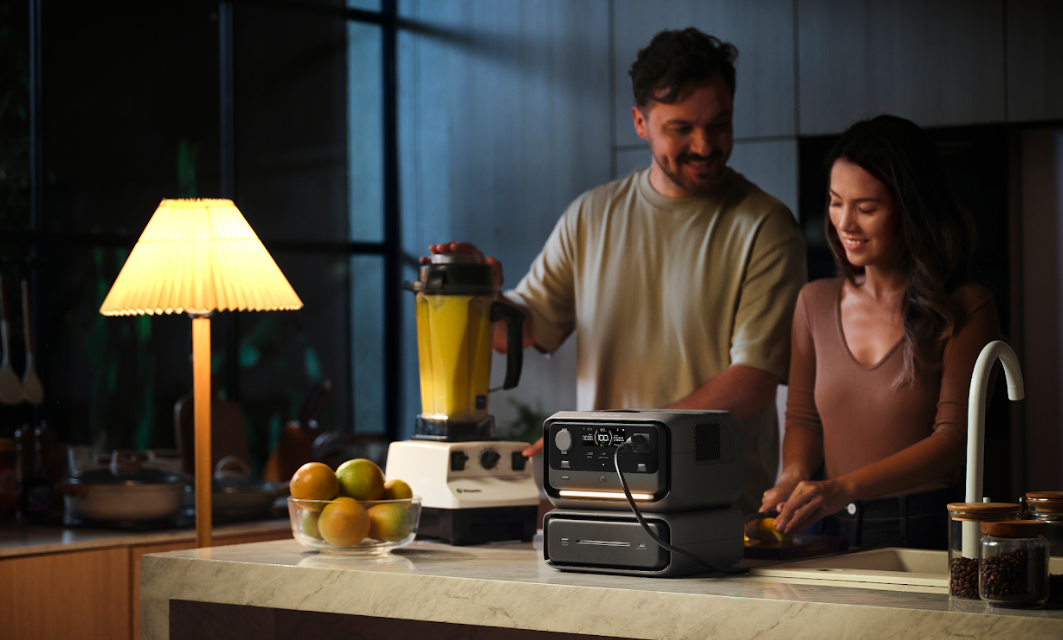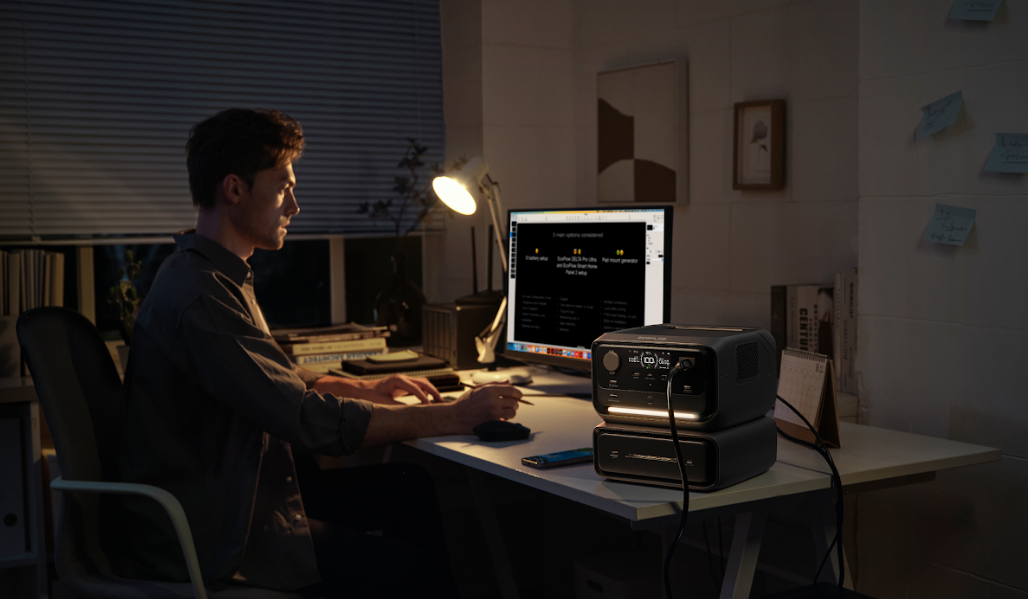The Podcaster's Off-Grid Power: Powering Mics, Mixers, and Laptops Anywhere
Key Takeaway
Off-grid power has totally transformed what's possible for podcasters. You don't have to be plugged into the wall outlet to create excellent audio anymore. With a bit of planning and the right gear, you can carry your recording studio with you nearly anywhere. Good power, particularly clean sine wave units, is an investment that safeguards your gear and provides your recordings with professional, crisp audio. Experience the freedom that off-grid power provides and propel your podcasting experience to greater levels.
Podcasting has moved beyond the studio. More podcasters are recording interviews in the park, producing episodes on the go, and capturing distinctive sounds in the field. Reliable off grid power is the backbone of this freedom. With the proper equipment, podcasters can power microphones, mixers, and laptops anywhere—no AC outlet necessary.
Why Off Grid Power Matters for Podcasters
Off grid power lets podcasters record anywhere they want, whenever they want. This freedom helps them be creative and tell real stories in real environments.
Recording outside involves challenges. It is not easy to power sensitive audio equipment without electricity. Running out of power in the middle of a recording means losing valuable material. Audio equipment needs clean, stable power to work correctly and sound good. Normal car batteries or shaky generators can cause your recordings to buzz or even damage your sensitive equipment. Delivering the right off-grid power is a question of getting consistent, high-quality power.
Off Grid Podcasting Gear: What Needs Power and How Much is Needed?
Prior to purchasing any off-grid power equipment, you will need to determine precisely how much power your current equipment consumes. This process is essential for the selection of a suitable portable power solution and the prevention of annoying power losses during a recording session.
Identifying Your Gear's Power Consumption
Each of your pieces of podcasting equipment consumes a certain amount of power. If you know these figures, you can simply add them to your total.
- Mics: Certain microphones require phantom power (48V) from your interface or mixer, which consumes more power. Others are self-powered and consume less.
- Mixers: Analog mixers tend to consume less power than digital mixers. The more the number of channels and features on your mixer, the higher the power consumption.
- Laptops: Laptops will probably be the most power-hungry device in a podcasting setup, especially when recording or engaging in intense editing.
- Other accessories: Don't overlook headphones, portable lights, or any small monitors that you may use. They all contribute to your total power needs.
Calculating Total Watt-Hours (Wh) Required
To figure out how big of an off-grid power supply you need, you'll work with watt-hours (Wh). A watt-hour will tell you how much energy a device uses over a certain amount of time.
- Watts (W): This represents the immediate power draw of equipment. You would typically see this on power supplies or in your equipment's manual.
- Volts (V) and Amps (A): Power can also be stated in volts and amps. Multiply volts by amps to find watts (W = V x A).
- Watt-Hours (Wh): Multiply the device wattage by the hours you'll be using it. Add up the watt-hours of all your devices and add a buffer (perhaps 20-30%) for safety and unexpected needs.
So, for instance, if your laptop consumes 60W and you need to record for 4 hours, that's 240Wh for the laptop alone. Repeat this for all you have, and you'll have a rough figure of your total Wh requirement for an off-grid power system.
Core Off-Grid Power Solutions for Podcasters
With a clear idea of your power needs, you can now look at the main off-grid power options available. These solutions vary in portability, capacity, and cost, helping you find the right fit.


Portable Power Stations (PPS)
Portable power stations are the top choice for most podcasters. Think of them as large, all-in-one battery packs with different outlets for your gear. They include AC (wall-style) outlets, USB ports, and DC (car-style) outlets in a single unit. They come in many sizes to match your power needs. You need to look for the following features:
Capacity (Wh): Make sure the watt-hour rating is high enough for all your equipment.
Output Ports: Check for the specific ports you need, especially AC outlets for laptops and mixers.
Charging: Look for fast recharging and solar input so you can connect solar panels.
Pure Sine Wave Inverter: This is a must-have for clear audio. It provides clean, stable power like you get from a wall outlet, preventing buzz or hum in your recordings. Avoid "modified sine wave" inverters, which can damage audio gear.
For podcasters looking for a dependable and portable solution, the ECOFLOW RIVER series stands out. The ECOFLOW RIVER 2 is perfect for solo creators who need lightweight power for a few hours of recording. If you need more capacity for longer sessions or multiple devices, the ECOFLOW RIVER 2 Pro offers higher watt-hour ratings and more output ports, including multiple AC outlets and fast USB-C charging. Both models recharge quickly and support solar input, so you can keep your setup running off grid all day. With pure sine wave inverters built in, the RIVER series ensures your audio stays clear and your gear is safe, making them a smart, flexible choice for podcasters on the move.
Solar Panels
Solar panels let you recharge your off-grid power station using sunlight, extending your recording time in the field. You can get foldable panels for portability or rigid ones for a more permanent setup. They produce silent, renewable power, which is ideal for quiet recording locations. Things to check:
- Wattage: Higher-wattage panels charge your battery faster.
- Compatibility: Most power stations have a built-in solar charge controller. If you build a custom system with a deep cycle battery, you'll need to buy a separate controller.
- Weather: Your charging speed depends on sunlight, clouds, and time of day.
Deep Cycle Batteries
For a larger or more permanent setup, like in a van or trailer, you might consider deep cycle batteries (such as LiFePO4 or AGM). They store a lot of power and have a long lifespan. However, they are not all-in-one units. You'll need to buy and connect separate parts: an inverter, a charge controller, and all the wiring.
Inverters
An inverter converts DC power from a battery to the AC power that your mixer and laptop need. For any audio application, you'll definitely need a Pure Sine Wave Inverter. It provides smooth, steady electricity that won't interfere with audio and won't damage your equipment. Ensure that the continuous wattage rating of the inverter is greater than your equipment's total power draw.
Practical Tips for Off-Grid Podcasting Power Management
Having the right off-grid power gear is just part of the equation. Using your power gear efficiently will make your remote recording sessions much smoother.
Reduce Your Power Use
Every watt you save extends your recording time.
- Use power-efficient laptops, like those with Apple's M-series chips.
- Dimming your screen is an easy way to save a lot of power.
- Unplug any external hard drives or other devices you are not actively using.
- A bus-powered microphone that plugs directly into your interface often uses less energy than a phantom-powered XLR mic running through a mixer.
Charge Your Gear Strategically
Good charging habits help keep you from running out of juice.
- Fully charge your power station, laptop, and all other battery-powered devices before you leave home.
- If you have solar panels, set them up as soon as you arrive, even if you're not actively recording. Let them charge your power station during breaks.
- If your battery runs low, decide what equipment you absolutely need and turn off non-essential items.
Monitor Your Battery Levels
Keep a close eye on your off-grid power levels.
Most portable power stations have a display showing the remaining battery percentage and current power draw. Check it throughout your session. Bring a separate, smaller power bank for your phone or a portable recorder just in case.
Create a Backup Plan
A dead battery can ruin your recording. A faulty cable or cloudy weather can leave you without power. A small, fully charged power bank for your phone or a tiny audio recorder can be the difference between getting your content and going home empty-handed.
Staying Safe with Your Off-Grid Power
Using off-grid power requires some basic safety steps to protect you and your equipment.
Ventilate Your Power Gear
Power stations and inverters get warm, especially when powering a lot of gear. Make sure they have good airflow. Don't cover them or place them in confined spaces where they can overheat.
Avoid Overloading the System
Check that the total power your gear needs doesn't exceed the output limit of your power station. Overloading the system can trip a safety switch or damage the unit.
Protect Equipment from Weather
Water, dust, and extreme heat or cold can ruin electronics. Keep your power equipment dry and clean, and within its recommended operating temperature range. Use protective cases when you are transporting it.
Use Good Cables and Connectors
Cheap, flimsy cables can cause power loss, add noise to your audio, or even create a fire risk. Use high-quality cables and check that all connections are secure.


FAQs About Off-Grid Podcasting Power
Q1: How much power do I really require for my podcast setup?
You'll need to sum up the wattage of all your devices and multiply it by the number of hours you plan to use them. For instance, a 60W laptop for 4 hours will be 240Wh. You'll need to include a 20-30% buffer to your total.
Q2: Can I utilize a regular car battery to run my podcast gear?
A regular car battery is made for engine starting, not deep discharge. It is possible to use a deep cycle battery (such as LiFePO4 or AGM) with a separate pure sine wave inverter, but it is more complicated than a portable power station.
Q3: Will a portable power station introduce noise to my audio?
If your portable power station has a pure sine wave inverter, it won't add noise to your sound. If it uses a "modified sine wave" inverter, you can expect to get hums and clicks, and even ruin sensitive audio gear.
Q4: How long will a typical portable power station hold out for podcasting purposes?
This all depends on the watt-hour (Wh) capacity of the power station and how much power your equipment consumes. If your equipment consumes 100W an hour and you have a 500Wh power station, then it will survive for about 5 hours.
Q5: Is solar power sufficient for professional podcasting?
Solar is a great way to charge your off-grid power station but is seldom a direct power source during recording, especially for extended high-power demands. Its reliability is based on consistent sunshine. It's more effectively utilized in prolonging the life of your primary battery source.